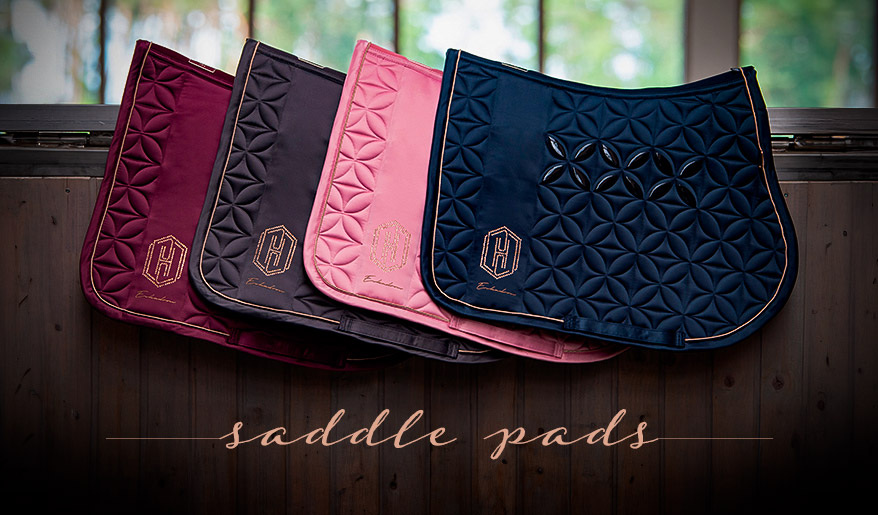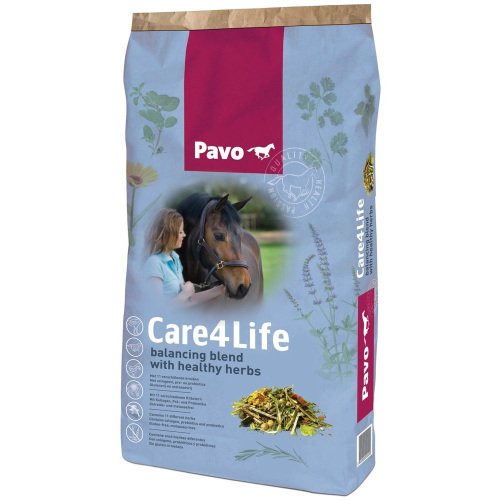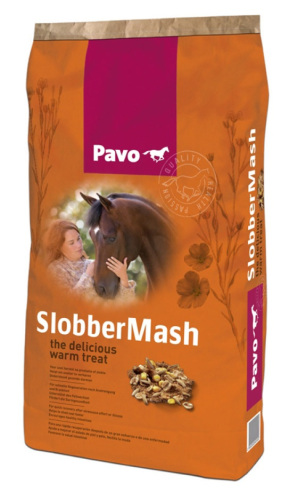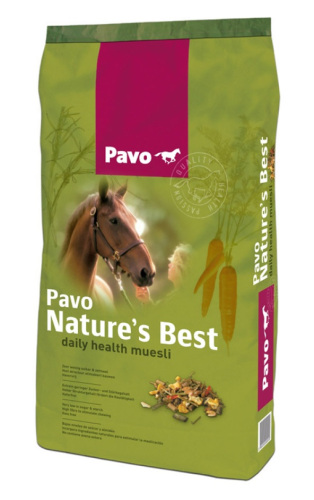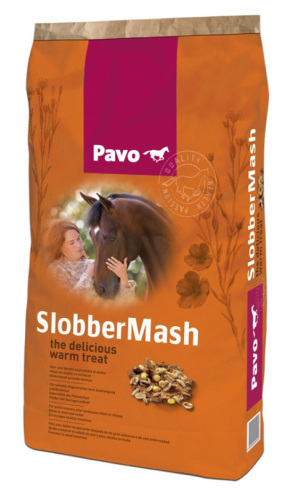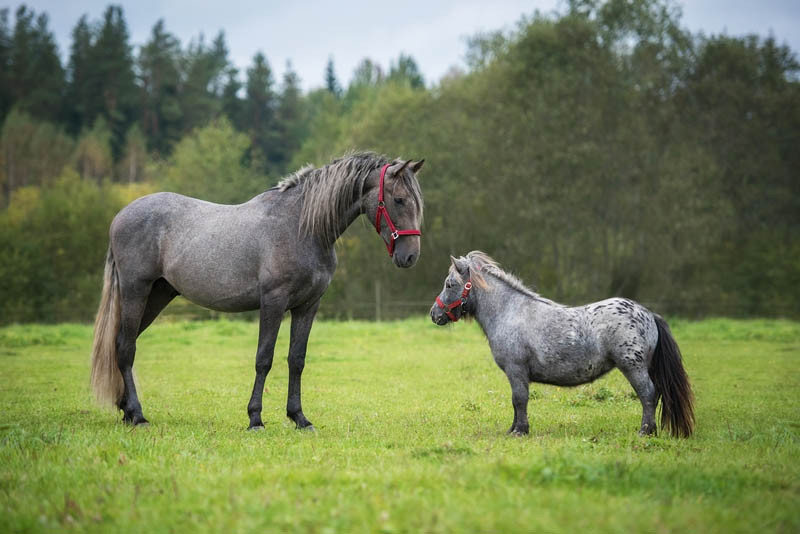
A lovak súlya sok különböző tényezőtől függ. Ez az egyik értékes mutató az állat egészségi állapotának felméréséhez. A ló hozzávetőleges súlyának becslése speciális technikákkal és eszközökkel lehetséges. Mindenképpen tájékozódnod kell, miért fontos a lovad súlyának ismerete, mitől függ és hogyan lehet ellenőrizni!
Miért fontos, hogy ellenőrizzük a ló súlyát?
A ló súlyának rendszeres ellenőrzése nagyon fontos az állat aktuális egészségi állapotának illetve kondíciójának meghatározásához. A normától való bármilyen eltérés értékes információ számunkra, ami arra utal, hogy szükség van a ló állatorvosi ellenőrzésére, illetőleg elemezni a ló jelenlegi étrendjét és életkörülményeit. Érdemes tisztában lenni azzal is, hogy a túlsúly vagy a soványság súlyos egészségügyi problémákat okozhat. A ló megfelelő testsúlyának ellenőrzése nagyon fontos az egészsége szempontjából, és lehetővé teszi étrendjének illetve edzéstervének megfelelő, valamint az állat képességeinek megfelelő beállítását.
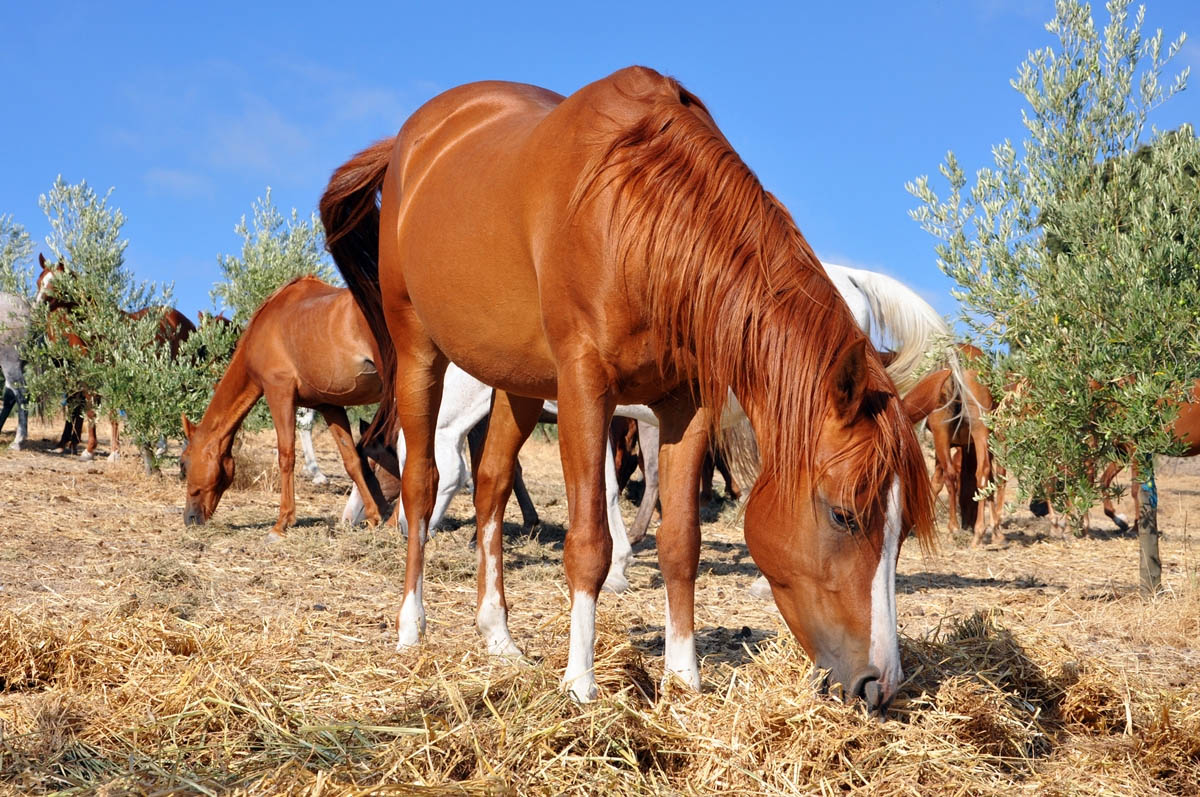
Mekkora a súlya egy születés utáni csikónak?
Becslések szerint egy újszülött csikó súlya általában anyja testtömegének 10%-a. Érdemes tudni, hogy ez elsősorban a kancától függ, és az apa súlyának befolyása csekély jelentőséggel bír. Tehát, ha egy egészséges anya súlya 500 kilogramm, akkor a csikója születéskor körülbelül 50 kilogrammot fog nyomni. Kivételt képeznek azok a kancák, amelyek először ellenek, mert ebben az esetben a csikók szinte mindig kisebbnek születnek a szokásosnál. Az ikerterhességből származó csikók, a koraszülöttek és a születési problémákkal küzdő csikók is átlag alatti súllyal rendelkeznek.
Mekkora a súlya egy felnőtt lónak?
A válasz a "Mennyi egy felnőtt ló súlya?" kérdésre nem egyszerű. A súlya számos tényezőtől függ, mint például: életkor, fajta vagy általános egészségi állapot. Becslések szerint egy 160-170 cm-es felnőtt ló súlya körülbelül 500-600 kg lehet. A hidegvérű lovak súlya meghaladhatja a 800 kg-ot is. A pónik átlagos súlyát 350-450 kg körülire becsülik. A ló súlya egyénenként változhat, például az egyéni nevelési mód vagy az edzés intenzitása miatt. Az a ló, amelyik ideje nagy részét legelőn tölti és könnyű edzésben van, többet nyom, mint egy azonos fajtájú ló, amely intenzív edzésben van illetve kiépített izomszövettel rendelkezik.
A ló súlya típustól függően
A ló súlya attól függ, hogy milyen fajtához tartozik. Vizuálisan a következő felosztást tudjuk megkülönböztetni:
Miniatűr lovak: 40-90 kilogramm
Pónik: 130-350 kilogramm
Könnyebb fajtájú lovak (olyanok mint pl. a telivérek): 400-700 kilogramm
Nagyobb, nehezebb vontató fajtájú lovak: 800-1000 kilogramm
A ló súlya fajtától függően
A ló súlyát kezdetben fajtája alapján is meghatározhatjuk:
| Ló fajtája | Átlagos testtömeg |
|---|
| Percheron | 850.5 - 950 kg |
| Belga hidegvérű | 816.5 - 998 kg |
| Suffolk Punch | 751 - 900 kg |
| Shire | 701 - 1,200 kg |
| Ardenni ló | 701 - 1,000 kg |
| Clydesdale | 701 - 800.5 kg |
| Irish Draught | 599 - 800.5 kg |
| Tinker | 590 - 726 kg |
| Heavyweight Hunter | 590 - 698.5 kg |
| Cleveland Bay | 549 - 701 kg |
| Hannoveri | 549 - 651 kg |
| American Warmblood | 549 - 599 kg |
| Dutch Warmblood | 549 - 599 kg |
| Oldenburgi | 544 - 680.5 kg |
| Fríz | 544 - 635 kg |
| Dán melegvérű ló | 544 - 635 kg |
| Andalúz | 544 - 590 kg |
| Paso Fino | 544 - 590 kg |
| Trakehneni ló | 499 - 680.5 kg |
| Middleweight Ridden Hunter | 499 - 635 kg |
| Wielkopolski ló | 499 - 635 kg |
| Highland Pony | 499 - 599 kg |
| American Saddlebred | 453.5 - 544.5 kg |
| Holsteini | 449 - 800.5 kg |
| Westfáliai | 449 - 599 kg |
| Lightweight Ridden Hunter | 449 - 590 kg |
| Thoroughbred | 449 - 499 kg |
| Paint ló | 431 - 544.5 kg |
| American Quarter | 431 - 544 kg |
| Hackney Horse | 410.5 - 544 kg |
| Lipicai | 410.5 - 544 kg |
| Nakota | 408 - 680 kg |
| Missouri Fox Trotter | 408 - 544 kg |
| Tennessee Walker | 408 - 544 kg |
| Luzitániai ló | 408 - 499 kg |
| Morgan | 408 - 499 kg |
| Polo Pony | 408 - 499 kg |
| Morgan | 408 - 499 kg |
| Svéd melegvérű ló | 399 - 549 kg |
| Hackney | 399 - 549 kg |
| Dales Pony | 399 - 499 kg |
| Fjord | 399 - 499 kg |
| Arab telivér | 360.5 - 449 kg |
| Haflingi | 349 - 599 kg |
| Fell póni | 349 - 449 kg |
| Welara póni | 299 - 399 kg |
| Eriskay póni | 299 - 399 kg |
| Exmoor póni | 299 - 399 kg |
| Connemara póni | 290 - 390 kg |
| Hackney póni | 249.5 - 349 kg |
| New Forest póni | 231 - 331 kg |
| Spotted póni | 199.5 - 399 kg |
| Dartmoor póni | 199.5 - 320 kg |
| Shetlandi póni | 181.5 - 199.5 kg |
A ló súlya és a marmagasság
Egy bizonyos elfogadott séma alapján nagyjából megjósolhatjuk, mennyi egy ló súlya. Figyelembe kell azonban venni, hogy ezek nagyon általános adatok, és csak az állat várható súlyának megközelítését szolgálják a magassága alapján.
| Marmagasság | Testtömeg |
|---|
| 91 cm | 190 - 240 kg |
| 101 cm | 240 - 280 kg |
| 111 cm | 240 - 318 kg |
| 121 cm | 240 - 370 kg |
| 131 cm | 280 - 399 kg |
| 141 cm | 360 - 449 kg |
| 151 cm | 399 - 550 kg |
| 161 cm | 469 - 701 kg |
| 171 cm | 551 - 800 kg |
| 181 cm | 700 - 1040 kg |
A ló súlya és a testének hossza, valamint kerülete
A ló hozzávetőleges súlya kiszámítható a martól a heveder helyéig terjedő terület kerülete és a ló testének hossza alapján. A ló korától és típusától függően a minta így néz ki:
Egy felnőtt nagy ló súlya: (körméret x körméret x testhossz) / 330 = testsúly fontban
Egyéves ló súlya: (körméret x körméret x testhossz) / 301 = testsúly fontban
Választási csikó súlya: (körméret x körméret x testhossz) / 280 = testsúly fontban
Póni súlya: (körméret x körméret x testhossz) / 299 = testsúly fontban
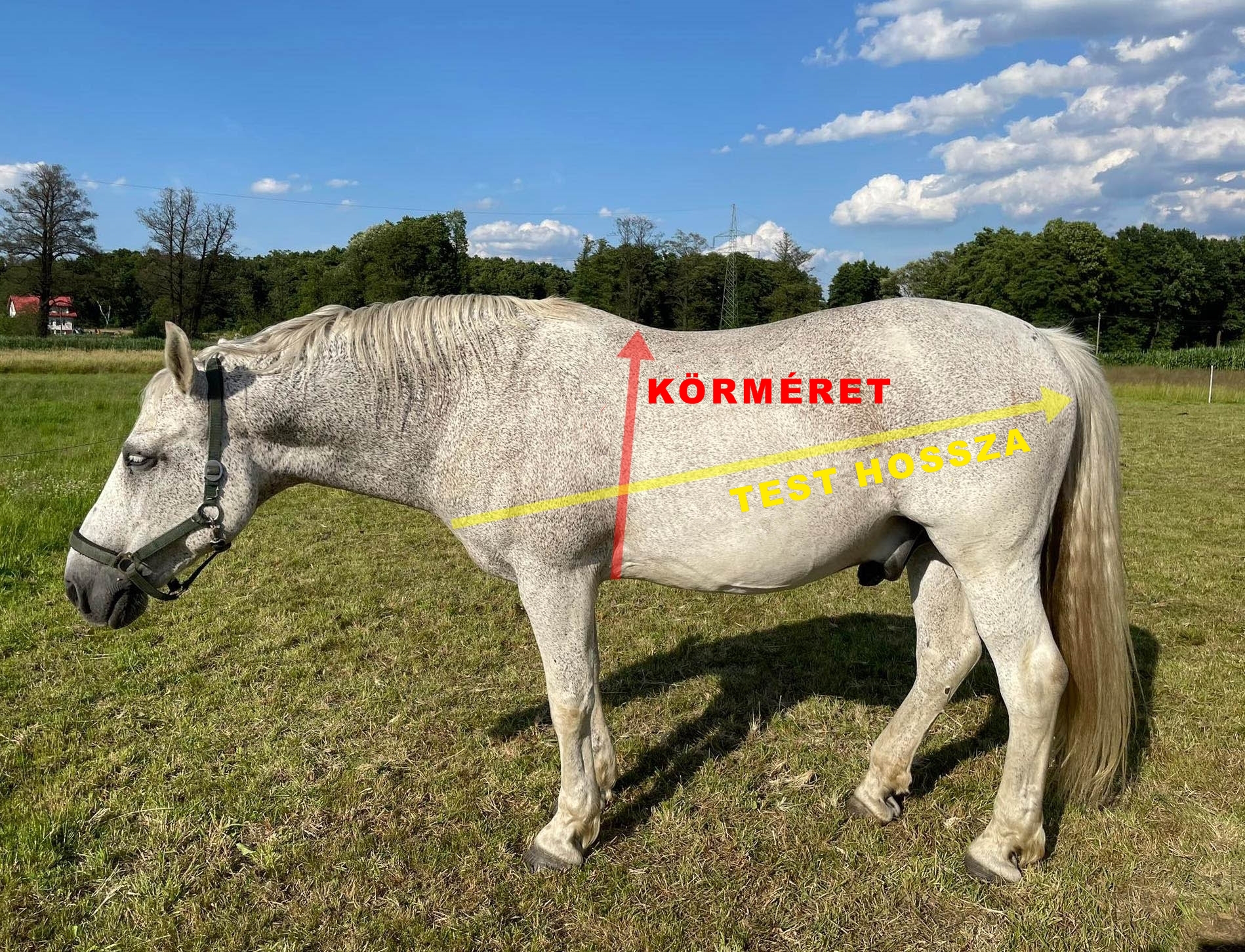
A kor és a ló súlya
A ló átlagos súlya az életkor alapján is megjósolható. Feltételezhető, hogy az újszülött csikók súlya az anya testtömegének körülbelül 10%-a. A választási csikók esetében a becslések szerint 0,9-1,1 kg-ot híznak naponta. Az egyéves csikók súlya a kifejlett súly körülbelül 50%-a kellene, hogy legyen. A kétéves lovak általában egy felnőtt ló súlyának 90%-át teszik ki, végső súlyukat 4 éves korukban érik el.
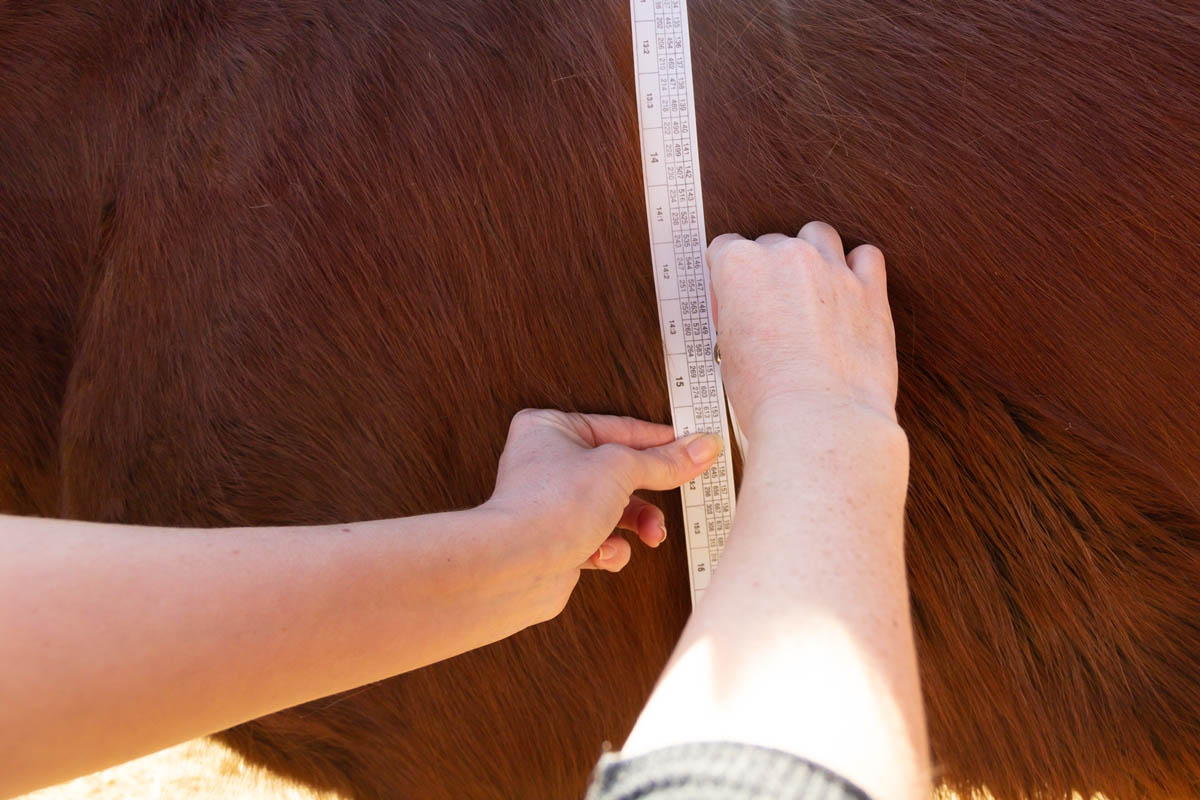
Hogyan jellemezzük a ló súlyát?
A ló hozzávetőleges súlyának ismerete egy speciális mérési vagy számítási képletnek köszönhetően lehetséges. Nem szabad azonban elfelejteni, hogy a kapott eredmények elsősorban tájékoztató jellegűek.
Mérőszalag
A lovas piacon kapható egy speciális mérőszalag, amely lehetővé teszi lovad méretének, körméretének és hozzávetőleges súlyának ellenőrzését. Az utasítások szerint meg kell mérni az állat hasának körméretét a mellső lábak és a mar között. Ennek eredményeként megkapjuk a mellkas körméretének méreteit, a ló súlyát kilogrammban, valamint a magasságát.
Sasimowski és Budzyński képlete
A ló hozzávetőleges súlyát egy speciális Sasimowski és Budzyński képlet alapján tudjuk kiszámítani. Először mérjük meg a ló törzsének kerületét a ló vállízületén és farcsontján (ülőgumó) keresztül. Ezután megmérjük a test kerületét a ló marja és könyöke mögött. Végül a kapott értékeket be kell helyettesíteni a következő képletbe: törzs hosszanti kerülete (cm) x testkörfogat (cm) x fajtaegyüttható.
A képlet a következőképpen is ábrázolható: C = O x P x W. Ahol O a mellkas körmérete, P a törzs hosszirányú körmérete a vállízületek és az ülőgumók külső területeitől mérve. Mindkét eredményt 0,01-es pontossággal kell megadni. A változók közül az utolsó - W, a ló helyes súlytényezőjét jelenti, amelyet a W = C / O x P képlettel számítunk ki.
Fajtaegyütthatók:
Azon lovak esetében, amelyek nem tartoznak a fenti fajtacsoportok egyikébe sem, a képletbe a fajtaegyütthatók átlagát kell behelyettesíteni.
Caroll és Huntington módszere
Ez a számítási képlet valamivel pontosabbnak tekinthető. A méréseket a test körméretének mérésével kell kezdeni, majd megmérjük a ló hosszát az ischiumtól (ülőgumó, farokcsont) a vállízületig terjedő szakaszon. Helyettesítsd be a kapott méreteket a képletbe: [törzs körmérete (cm)2 x hossz (cm)]: 11877.
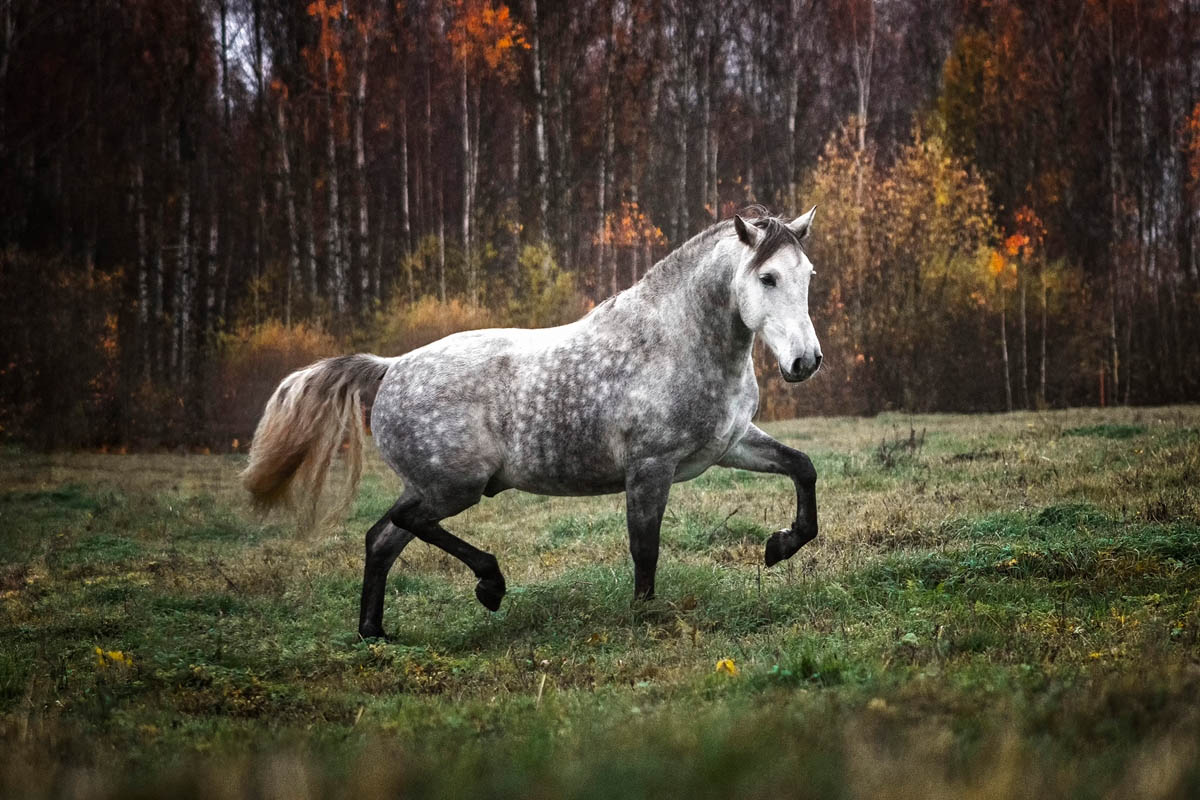
A ló testállapotának értékelése BCS módszerrel
A Body Condition Scoring (BCS) módszert Dr. Don Henneke dolgozta ki több, mint 40 évvel ezelőtt. Célja a ló testének állapotának felmérése vizuális és tapintási érzetek segítségével. Az értékelés egy 1-től 9-ig terjedő skálán történik, ahol a legalacsonyabb pontszám extrém soványságot, a legmagasabb extrém elhízást jelenti. A jó állapotot jelző kívánatos, elvárt pontszámok 4-től 6-ig terjednek. Emlékezni kell arra, hogy a BCS egy olyan módszer, amely a ló aktuális állapotának objektív értékelésére összpontosít. Mindig figyelembe kell venni az állat egyéni jellemzőit, mert állapotát sok egyéb tényező is befolyásolja. A ló testének állapotának felmérése során annak 5 konkrét részére összpontosítunk:
Nyak és mar
- 1 – Nincs látható zsír. A nyak tövénél ernyedt, a mar kiálló, látható csontos szerkezettel.
- 2 – A nyak taréja besüllyedt és jól körülhatárolható. Csontos mar.
- 3 – A nyak taréja besüllyedt, nem kapcsolódik egyenletesen a test többi részéhez. A taréj mentén és a mart körülvevő vékony zsírszövetréteg tapintható.
- 4 – A nyak folytonosan kapcsolódik a test többi részéhez, és a megfelelő zsírréteg látható rajta.
- 5 – Megfelelően kinéző nyak, megfelelő mennyiségű zsírréteggel. A nyak taréja egyesíti és lekerekíti a mar ívével.
- 6 – A nyakon és a mar mindkét oldalán zsír tapasztalható.
- 7 – A nyak taréján egy jól látható zsírréteg figyelhető meg illetőleg egy nehezen meghatározható mar.
- 8 – A nyak észrevehetően vastagabb, és azt a benyomást kelti, hogy a zsír elválik magától a nyaktól.
- 9 – A nyak bőségesen zsíros. A zsírszövet lelóghat a nyak egyik oldalára. A maron domború zsírszövet-lerakódások láthatók.
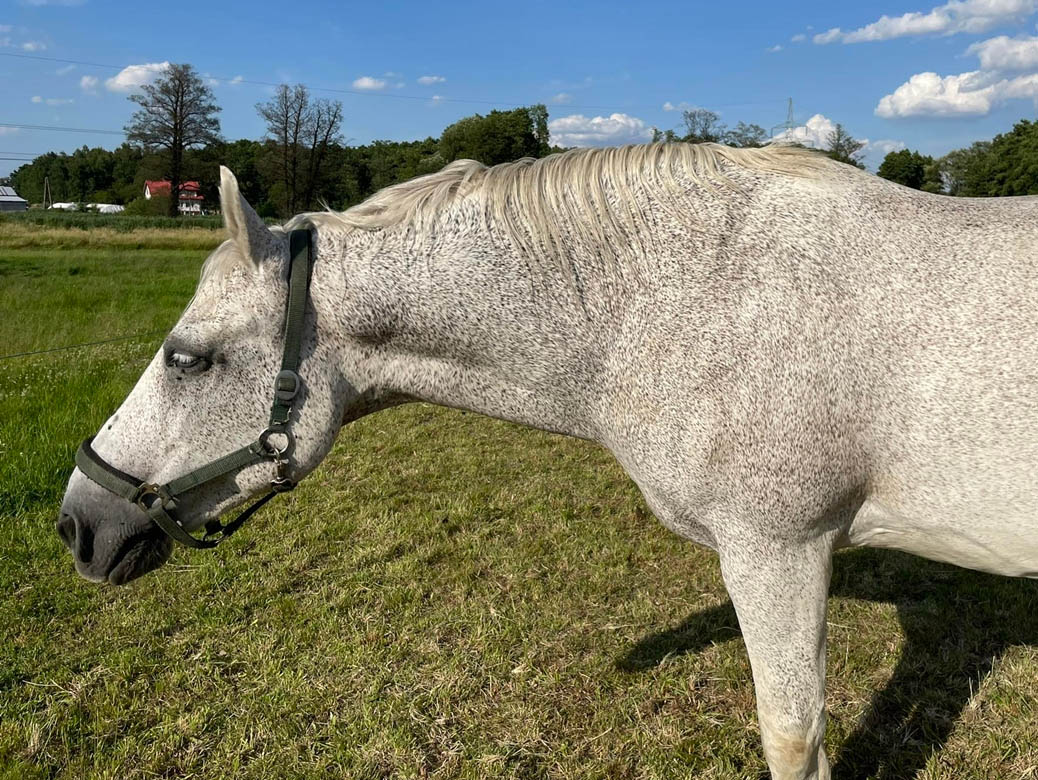
Lapocka
- 1 - A lapocka csontjai egyértelműen kiállnak.
- 2 – A lapocka látható, de zsírszövet nem tapintható.
- 3 – A lapocka körvonala kissé látható.
- 4 – Lapocka alig látható.
- 5 – A lapocka egyenletesen van izomszövettel borítva, és a zsír enyhén érezhető.
- 6 – A lapockán enyhén látható és tapintható zsírszövet-lerakódások figyelhetők meg.
- 7 – A lapockán és körülötte a zsírszövet jól tapintható.
- 8 – A lapocka területe egyértelműen tele van zsírral.
- 9 – Jelentős zsírlerakódások figyelhetők meg.
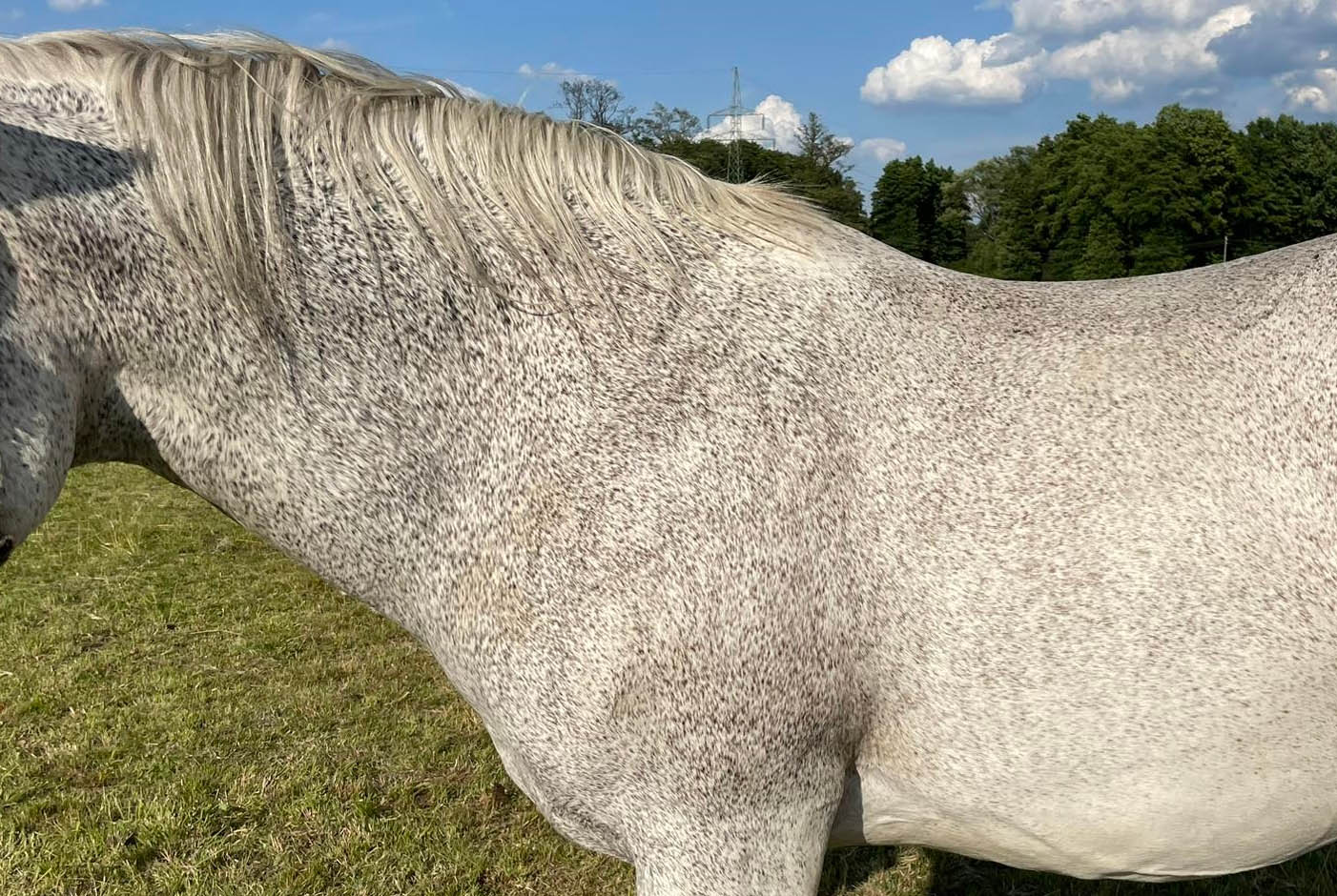
Bordák
- 1 – Kiálló és jól látható bordák. Bármilyen zsírszövet abszolút hiánya figyelhető meg.
- 2 – Kiálló bordák, amelyeket jelentéktelen zsírszövet réteg borít.
- 3 – Kiálló és könnyen tapintható bordák, melyeket könnyű zsírréteg borít.
- 4 – A bordák kissé láthatóak.
- 5 – A bordák láthatatlanok, de tapintásra könnyen érzékelhetőek.
- 6 – A bordákat zsírszövet veszi körül, és mélyebb érintésre van szükség, hogy érezzük őket.
- 7 – A bordákat nehéz kiérezni a zsírszövet alatt.
- 8 – A bordák szinte teljesen észrevehetetlenek a zsírréteg alatt.
- 9 – A ló bordái észrevehetően tele vannak zsírszövettel.
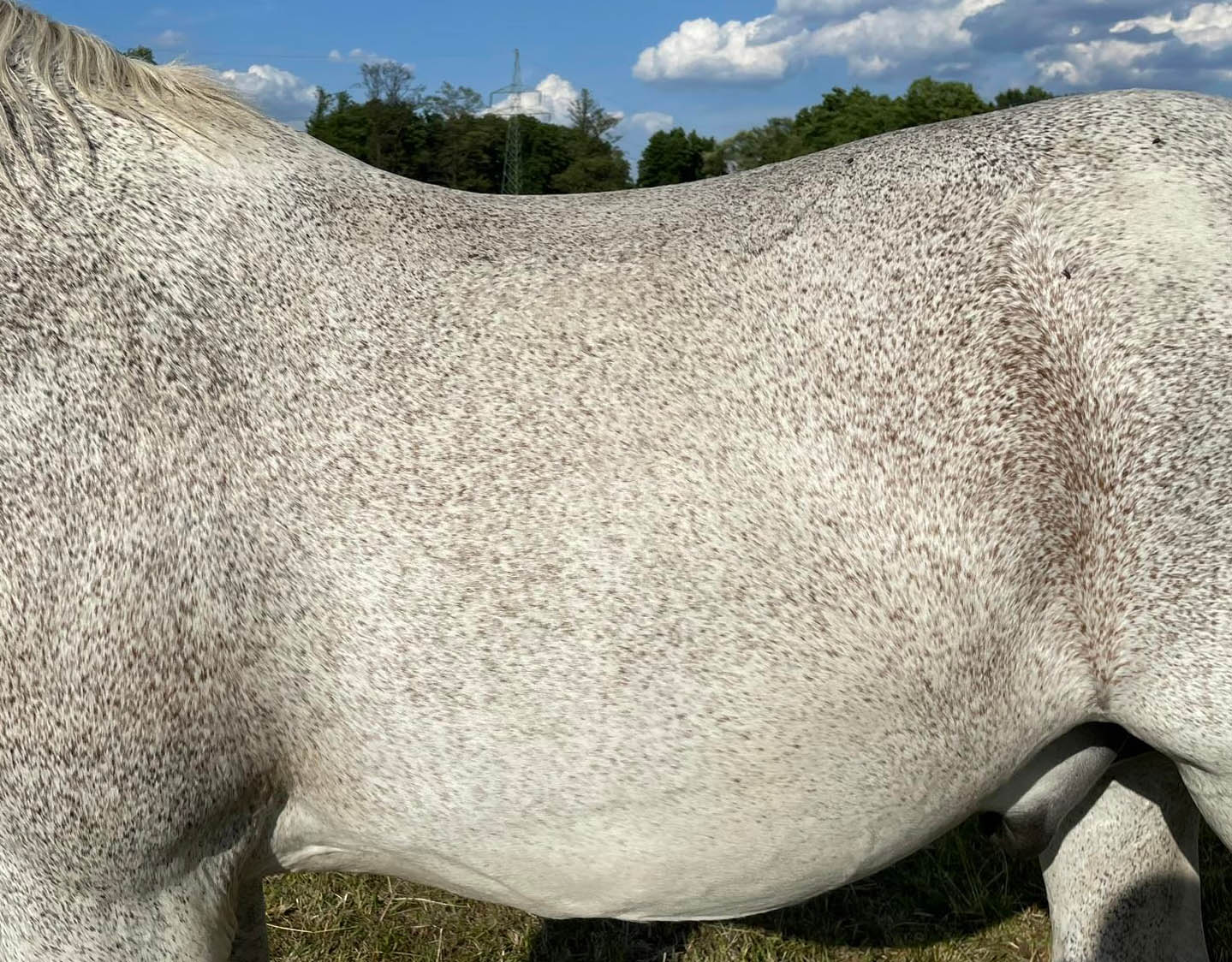
Hát
- 1 – A hátvonal erősen meghatározott, a gerinc és a csigolyák szerkezete jól észrevehető.
- 2 – A gerinc egyértelműen kiálló, és a tövisnyúlványokon elhanyagolható zsírréteg található.
- 3 – Enyhe zsírfelhalmozódás tapasztalható, és a gerinc szerkezete rosszul látható.
- 4 – Enyhén megépült gerinc figyelhető meg.
- 5 – A hát megfelelően megemelkedett, közepes mennyiségű zsírral. A tövisnyúlványok tapinthatóak, de nem állnak ki.
- 6 – A gerincoszlop nyúlványai enyhén tapinthatóak, a hátvonal puhább tapintású.
- 7 – A gerincoszlop nyúlványai gyengén tapinthatóak, de a hát hátsó részén jól látható zsírréteg érezhető.
- 8 – A gerinc mentén egy bemélyedés van, amelyet zsírszövet képez. A gerinc váza nem érezhető.
- 9 – Jól kivehető a hátoldali bemélyedés, az ún. "párnák" figyelhetőek meg a háta vonala mentén. A csont nem kivehető.
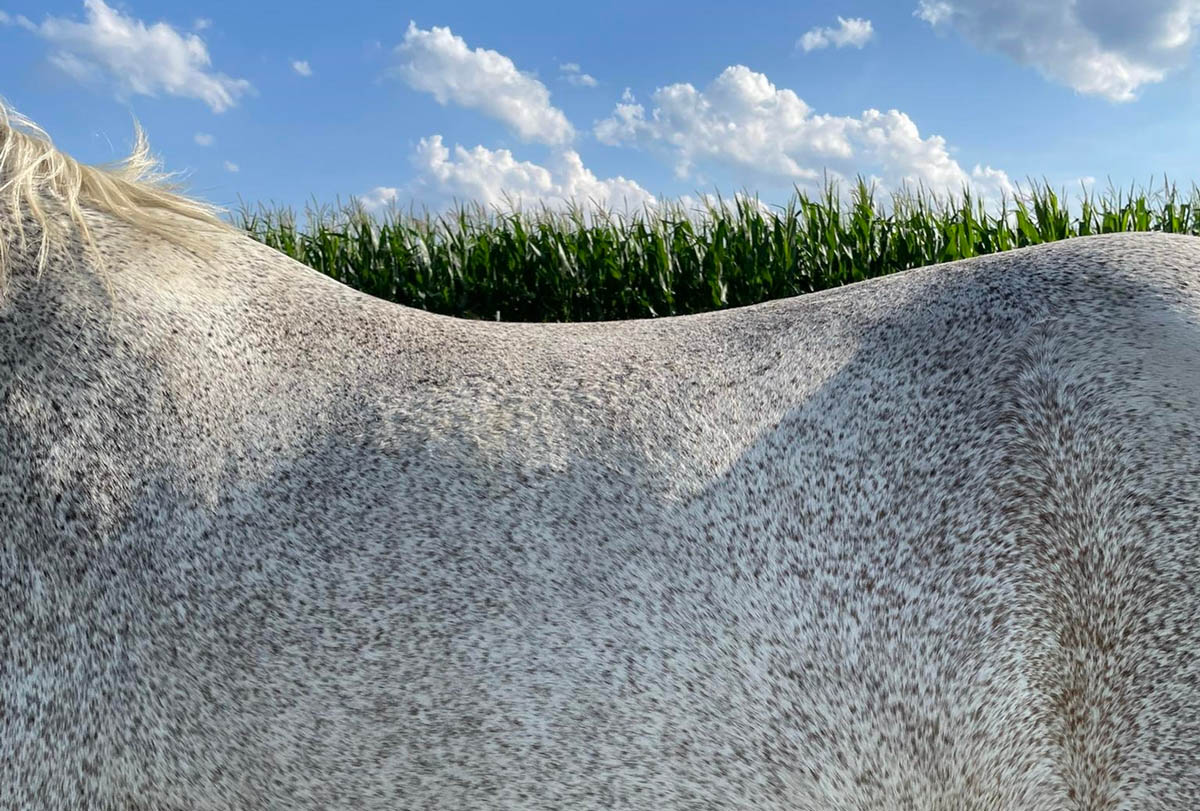
Far és faroktő
Értékeléskor a faroktövére kell a fő hangsúlyt helyezni, de figyelembe kell venni az egész fart is.
- 1 – Nincs tapintható zsírszövet, izomsorvadás és egyértelműen kiálló faroktő, ülő- és csípőgumók.
- 2 – Erősen kiálló faroktő, az ülő- és csípőgumók kiállóak, és elenyésző a zsírszövet.
- 3 – A farok tövében lévő zsírszövet enyhén tapintható. A csípő dudorai láthatatlanok.
- 4 – Zsírszövet érezhető a farok töve és teste körül. Az ülőgumók láthatatlanok.
- 5 – A farok tövét puha zsír borítja, és a farok teste jól kitapintható.
- 6 – Puha, jól látható és egyenletesen eloszló zsír a farok tövénél.
- 7 – Jól észrevehető zsír a farok tövében.
- 8 – A farok teste vastag, és jelentős mennyiségű lágy zsírszövet veszi körül. Megfigyelhető az "almás" far.
- 9 – A farok töve bőségesen tele van zsírszöveti lerakódásokkal. Almás far.
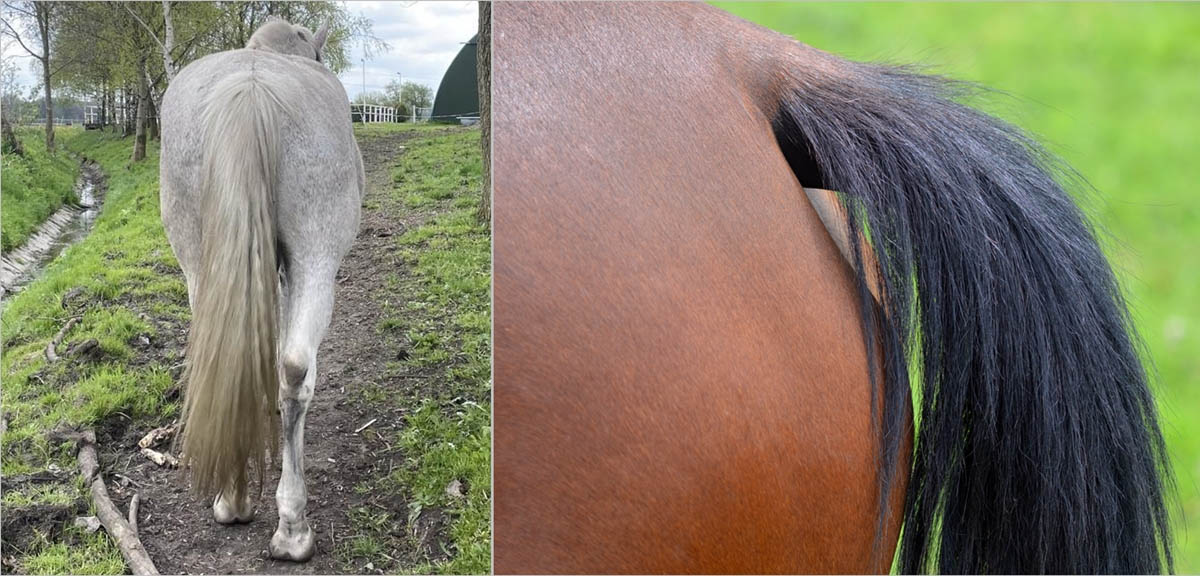
A ló súlya és a lovas súlya
Általában azt feltételezik, hogy a lovas ideális súlya a ló súlyának 10-15%-a. Tehát ha egy ló súlya 500 kg, akkor a számára legmegfelelőbb lovasnak 50 és 70 kg között kell lennie. Nagyobb súlyú lovasok esetén érdemes megfontolni a nagyobb teherbírású hátasló választását. Ha túl nehéz lovas lovagol egy lovon, az számos kellemetlen következménnyel járhat. A túl nagy terhelés a gerinc, az ízületek és az izmok károsodásához vezethet, emellett a munkára való hajlandóság elvesztését illetve az állat mozgásának minőségét is ronthatja. Emlékezni kell arra is, hogy a fenti számításokat hozzávetőleges értékként kell kezelni - nem mindig a ló súlya határozza meg, hogy mennyit képes a hátán cipelni.
A legkönnyebb és a legnehezebb lovak a történelemben
A legkisebb élő hím ló Guinness-rekordját egy Bombel nevű ló tartja. Jelenleg a Łódź-i Kaskada ménesben él. Bombel 60 kilogramm súlyú, 56,7 centiméter magas, rekordját hivatalosan 2018. április 24-én hagyták jóvá.
A történelem legnagyobb súlyát elérő ló Sampson - egy Shire-i hidegvérű ló. 1846-ban született az angliai Toddingtonban. Súlya 1500 kilogramm, marmagassága pedig körülbelül 230 centiméter volt. Amikor elérte a 4 éves kort, a nevét Mammoth-ra (Mamut) változtatták.
Összegzés
A ló súlya sok különböző tényezőtől függ. Pontos súlyának meghatározása szinte lehetetlen, de van néhány módszer és eszköz az állat hozzávetőleges súlyának kiszámítására. Feltételezik, hogy a csikók születésük után elérik anyjuk súlyának körülbelül 10%-át. A körülbelül 160-170 cm marmagasságú felnőtt lovak átlagos súlya 500-600 kilogramm. Az igáslovak súlya meghaladhatja a 800 kilogrammot, a Shire fajtájú, Sampson nevű ló pedig a történelem legnehezebb lova. A lovunk súlyának rendszeres ellenőrzése is nagyon fontos, mert gyors reakciót tesz lehetővé, ha olyan normától való eltérést észlelünk, amely egészségügyi problémákra utalhat.
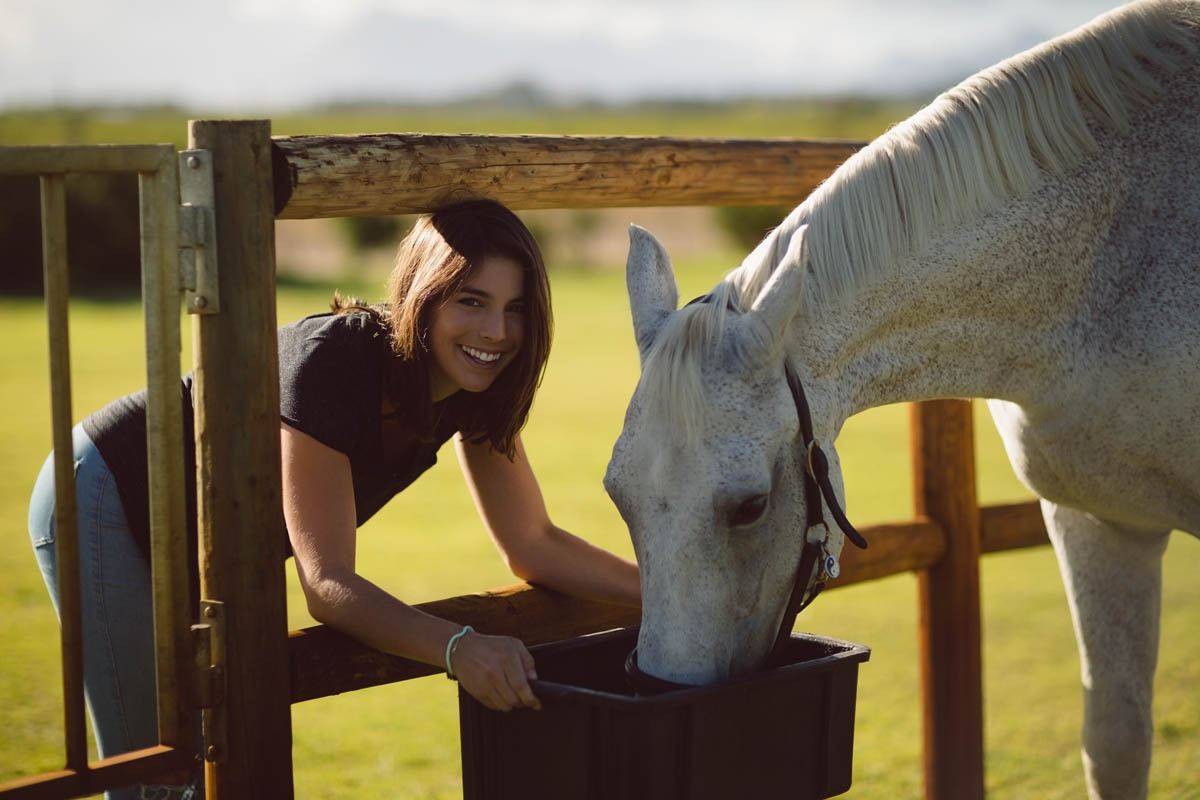
Gondoskodj lovad megfelelő étrendjéről, és látogass el TAKARMÁNYOK ÉS KIEGÉSZÍTŐK részlegünkre
Lovasbolt: +48 784 039 784
E-mail: kapcsolat@equishop.com
Hírek az Equishop Lovasboltból:





